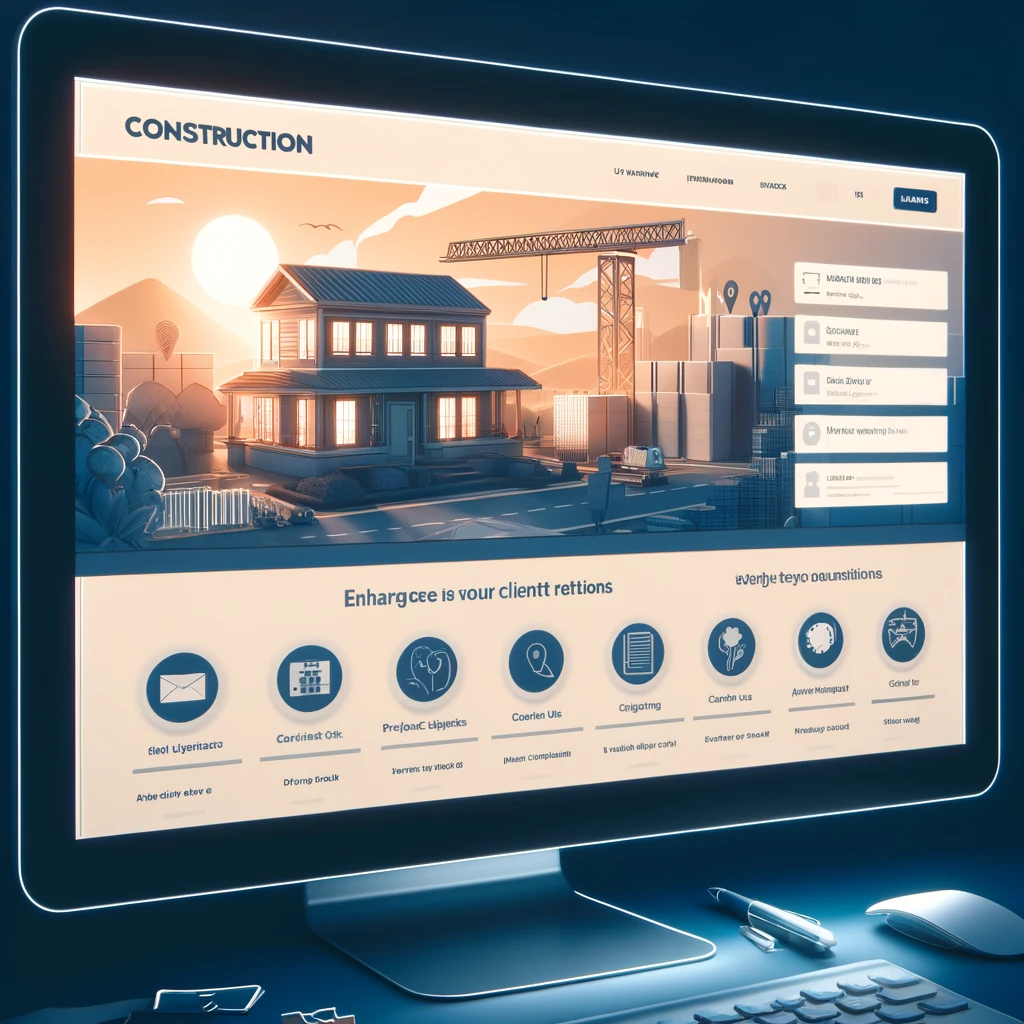Introduction

Hey there! In the construction business, building strong relationships with clients is just as crucial as constructing a sturdy building. Your website can be a fantastic tool to strengthen these relationships. Let’s explore how a thoughtfully designed website can transform your client interactions and boost satisfaction.
User-Friendly Design
First impressions matter, and a user-friendly website design makes a big difference. Here’s what to focus on:
- Intuitive Navigation: Ensure that information is easy to find with a clean, organized menu. No one likes getting lost, be it on a website or at a construction site.
- Mobile Responsiveness: With clients likely checking updates on-the-go, a mobile-responsive design ensures they can access your site from any device.
Effective Communication Channels
Clear and open channels of communication are vital. Consider these tools:
- Live Chat and Chatbots: These provide immediate assistance or guidance, answering common inquiries instantly.
- Contact Forms and FAQs: Help address more specific client concerns efficiently, reducing wait times and frustration.
Project Updates and Transparency
Clients appreciate transparency, especially regarding their ongoing projects.
- Client Portals: Offer a secure login area where clients can see real-time progress, documents, and budgets. This transparency builds trust and keeps clients engaged.
Testimonials and Case Studies
Testimonials and case studies aren’t just marketing tools; they’re confidence builders.
- Showcase Testimonials: Let potential clients hear directly from satisfied customers.
- In-Depth Case Studies: Highlight your approach and the results of major projects. This not only shows what you can do but also how you manage and solve real-world construction challenges.
Resource Centers
Educating your clients about the construction process can greatly enhance your relationship.
- Resource Hub: Create a section on your website dedicated to educational content like how-to articles, video tutorials, and downloadable guides.
- Benefits: Informed clients are more likely to have realistic expectations and feel more involved in their projects.
Personalization and Client Engagement
Tailoring the website experience can make clients feel valued and understood.
- Personalization Techniques: Use cookies to remember client preferences or past actions, and tailor content accordingly.
- Analytics: Leverage data analytics to track client behavior on your site and adjust your strategies to better meet their needs.
Feedback Mechanisms
Feedback is a two-way street that can lead to significant improvements.
- Surveys and Reviews: Encourage clients to provide feedback on their experiences. This not only shows you value their opinion but also helps you refine your processes.
Conclusion
Using your website to foster better client relations is a smart strategy in today’s digital age. By making your site a helpful resource, maintaining open lines of communication, and showing transparency, you can build stronger, more trusting relationships with your clients. So why not give your website the tools it needs to build these vital connections?